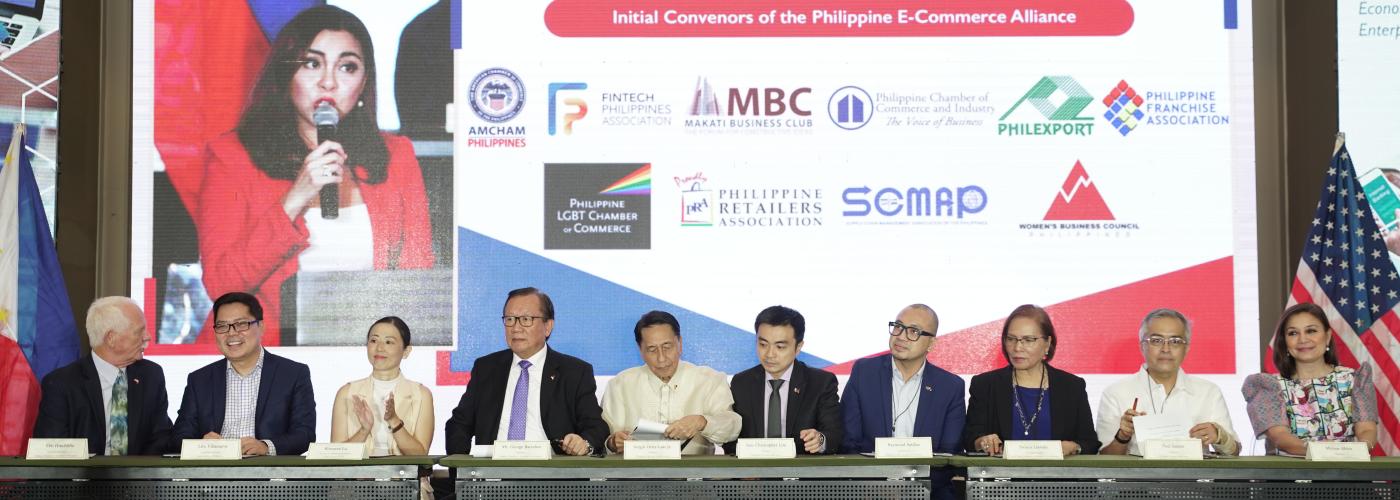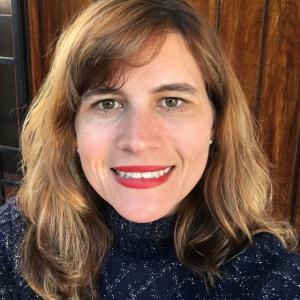How to Measure LGBTQIA+ Inclusive Market Systems Development
Image

How to measure LGBTQIA+ inclusive market systems development
What’s measured, matters. This is a well-worn, yet true adage in market systems development (MSD). For this reason (and others), I advocate for MSD programs to integrate gender equality and social inclusion (GESI) considerations in their MEL systems. However, recent conversations with Branden Ryan, Senior GESI Practice Specialist at Chemonics, and Dun Grover, the Deputy Chief of Party of USAID Feed the Future Transforming Market Systems (TMS) Activity, has made me appreciate that sometimes a more nuanced approach is needed. This article features four insights for measuring LGBTQIA+ inclusive market systems development.
First, align ‘Do No Harm’ with the decision whether (or not) to measure LGBTQIA+ inclusive development.
A key component for LGBTQIA+ inclusive development is putting into practice the concept of ‘Do No Harm.’ This can extend to deciding what and how to measure LGBTQIA+ inclusive development in MSD programs. In Branden’s experience, LGBTQIA+ inclusive development can be difficult, or even unsafe, to measure.
“It doesn’t always make sense to disaggregate individuals’ data by people who identify as LGBTQIA+. There is a real challenge in collecting data that is very personal, including data on diverse sexual orientation, gender identity, gender expression, and sex characteristics (SOGIESC).” — Branden Ryan
Dun’s experience with TMS, an inclusive market systems development program with an objective around LGBTQIA+ inclusion implemented by ACDI/VOCA, confirms this challenge. What he learned is that LGBTQIA+ people may be present but not as visible in a certain sector or activity, given the real concerns around privacy and safety. TMS had to rethink how it would measure the inclusion of LGBTQIA+ people.
“So imagine you are LGBTQIA+, and you want to access assistance, and you have a registry form, do you check the box or not? Will that be beneficial, or will that be harmful? By asking this question, we are asking LGBTQIA+ people to confront this question.” — Dun Grover
As the recently released USAID LGBTQI+ Inclusive Development Policy notes, not all people with diverse SOGIESC identify as part of the LGBTQIA+ community, so implementers of MSD programs should consider the security and ethical considerations of data collection. Both Branden and Dun acknowledge these challenges associated with collecting data on people who identify as LGBTQIA+ but have found innovative ways of learning about LGBTQIA+ populations, which minimize risks.
For TMS, they carefully consider what information they want to collect and when. While TMS partner organization staff complete participant registries, annual surveys are conducted by independent enumerators. TMS takes time to communicate with partners why they are asking questions about LGBTQIA+ populations including how and when it is appropriate to ask them. LGBTQIA+ individuals may voluntarily self-identify in this registry. Through its annual survey, TMS also offers an opportunity for LGBTQIA+ individuals to self-identify.
In Branden’s experience, he has found that programs can generate good information by monitoring changes at an organizational or institutional level, rather than at an individual level. For example, monitoring whether businesses have implemented anti-discrimination policies, looking at legal frameworks for recognition and safety measures for individuals of diverse SOGIESC, or tracking how many self-identified LGBTQIA+-owned businesses are being supported under an MSD program are sentinel indicators that have ensured that the programs he supports are monitoring the impact of their work on LGBTQIA+ people without putting them at undue risk.
“Rather than including disaggregating people-level indicators by SOGIESC which could pose safety concerns in certain contexts where LGBTQIA+ identities are criminalized–like tracking the number of self-identified LGBTQIA+ farmers with improved access to agricultural inputs–we can measure the number of agri-businesses that are integrating anti-discrimination clauses into their work as a result of development assistance. Then, we look at the extent to which resulting services or benefits are increasingly more inclusive of LGBTQIA+ smallholders in consultation with an representative organization who can navigate these contexts safely.” — Branden Ryan
Design inclusively to benefit as many people as possible, including people from the LGBTQIA+ community.
Branden explained that if you design inclusively from the start, for example, by using Universal Design principles, interventions will benefit everyone, not just select target groups like women, youth, and/or people from the LGBTQIA+ community. He draws inspiration from research from the education space or articles on inclusive design of spaces, communications, and campaigns when advocating for thinking critically about the diversity of participants or stakeholders the program is working with, and what measures it can put in place to be more inclusive across the board rather than focusing on a specific group such as people from the LGBTQIA+ community.
“If we try to diversify the core and supporting actors participating in the market system by increasing equity measures implemented by MSD programs, then the market system improves its equitable impact. Inclusive development is not about whether the system is working for certain actors within a sphere of influence, but whether it is actually working for everyone collectively and holistically to improve where they are.” — Branden Ryan
Branden is increasingly seeing MSD and inclusive economic growth programs implement LGBTQIA+ inclusive development activities. This may entail integrating LGBTQIA+ within broader inclusion and safeguarding initiatives or working with LGBTQIA+ groups, such as in the Philippines where USAID has supported the launch of an e-commerce alliance in 2023 whose inaugural members include the Philippine LGBT Chamber of Commerce. Offering multi-channel extension options–such as mobile clinics, demo plots, digital platforms, and traditional extension agents–benefits all farmers including LGBTQIA+ farmers, says Branden. Further, he says that increasing and diversifying the potential touchpoints with farmers ensures that the information reaches a broader audience while ensuring that people with mobility challenges or who may feel unsafe in large gatherings can access information in the way that works best for them.
“Providing multiple means for individuals to engage can be translated into a lot of the work we do and lead to broader, more inclusive effects.” — Branden Ryan
Another way to boost financial accessibility is working with a financial institution to develop financial products that take into consideration the fact that LGBTQIA+ borrowers may not meet traditional collateral requirements. By working with these institutions to introduce new loan assessment methodologies which consider the use of alternative collateral, programs are increasing access to financial products and services for LGBTQIA+ people but also other excluded groups such as women and youth who also traditionally own less land and have fewer assets.
Both Branden and Dun acknowledge challenges of integrating LGBTQIA+ inclusive development on a MSD program; the context and type of program matters. In Branden’s experience, democracy and governance programs can be better positioned to address discriminatory laws, social norms, and root causes of LGBTQIA+ exclusion directly than traditional MSD programs.
“Sometimes the scope of MSD programs isn’t looking at the larger legal environment and might not necessarily have all the means to implement social behavior change programs, or campaigns that get at the root of stigma and discrimination. So it’s also a matter of what’s in the meaningful control of the program, which can be tough, because formal laws are the immediate barrier to meaningful LGBTQIA+ inclusion. In these instances, MSD programs can ensure they are providing support to local organizations or community groups who either represent or support diverse producers, input suppliers, processors, or other value chain actors within the broader market system to alleviate economic pressures and promote dignity and agency for agricultural or agri-business livelihoods. ” — Branden Ryan
For TMS, which works with a LGBTQIA+ advocacy group, SOMOS CDC as both a partner which offers BDS services to entrepreneurs including those that identify as LGBTQIA+ and as a service provider and community educator the question is whether this hybrid, direct and indirect way of working is consistent with MSD approach.
Embed LGBTQIA+ inclusive development into broader inclusion and safeguarding capacity building efforts.
Similar to the way that Branden advocates for the integration of LGBTQIA+ members into a more inclusive technical approach, he also recommends raising awareness about this community through foundational staff training on inclusion and safeguarding. In his experience, unconscious bias training can offer a starting point to raise awareness about LGBTQIA+ people. Because these types of training usually result in increased staff commitment to working inclusively, it can make it easier to see how their actions translate into LGBTQIA+ inclusive development.
“At Chemonics, we regularly facilitate unconscious bias training for staff. We tailor them to the sector and the operating contexts and come up with scenarios. We try to embed a conversational aspect because that’s where you often get a lot more of the thought-provoking discussions around the commitments that the whole project team can make for working inclusively and all of their interventions.” — Branden Ryan
Branden acknowledges that there are some contexts where it is easier. For example, he finds it easier to talk about third-gender individuals or transgender people in their Southeast Asia programs, because it is more culturally visible and accepted. He advocates a culturally sensitive and subtle approach to training on LGBTQIA+ inclusive development, starting with building allyship in the initial unconscious bias training and then pivoting to activity implementation. Dun affirms the importance of staff training and says that he saw significantly more awareness and understanding from staff members after attending a training by a local LGBTQIA+ group.
Help fill the LGBTQIA+ inclusive development data gaps.
When considering the challenges in LGBTQIA+ data collection, it is unsurprising that this is a big gap for many practitioners (including me) on LGBTQIA+ inclusive development. The lack of data and evidence is an issue at the Activity level, but this area of inclusive development is integral to effective market systems development. While gender analyses are now (mostly) the norm in USAID funded programs, layering additional lenses for youth, migrants, persons with disabilities, or the LGBTQIA+ community especially varies according to context, program scope, and (un)conscious biases of those conducting the analyses according to Branden. Adding a LGBTQIA+ analysis is particularly important to understand the unique barriers and constraints they may face in terms of the legal system or social stigma.
“There’s a huge opportunity for development practitioners, including myself who identifies as part of this community, to grow in their application and implementation of LGBTQIA+ plus inclusive development.” — Branden Ryan
While the MSD and international development community more broadly has a long way to go to mainstream LGBTQIA+ inclusive development, Branden and Dun are both encouraged by an uptick in events designed to raise awareness and share lessons learned from implementing LGBTQIA+ inclusive development such as the Agrilinks webinar on Farming Under the Rainbow Initiative and the Inclusive Development Summit which spurred the formation of a dedicated LGBTQIA+ community of practice.
*Photo from the public launch of USAID/Philippines Strengthening Private Enterprise for the Digital Economy (SPEED) including the Philippine LGBT Chamber of Commerce as one of the initial convenors of the Philippine E-Commerce Alliance. Credit: USAID/Philippines SPEED
Branden Ryan is a Senior Specialist for Gender Equality and Social Inclusion based in Chemonics HQ in Washington, DC. In his role, he also serves as the technical lead for Chemonics’ LGBTQIA+ Technical Working Group under the GESI Practice and provides technical advice to a range of Chemonics’ proposal and program implementation teams on how to operationalize LGBTQI+ inclusive development.
Dun Grover is the Deputy Chief of Party for the USAID/Honduras TMS Activity where he coaches and supports local teams and partners to apply systems approaches to solve complex problems and improve development results. Dun has over a decade of international development experience in monitoring, evaluation, and learning, as well as technical advisory roles in economic development programs.
This blog series is written by the Canopy Lab’s Managing Partner and Inclusion+ Practice Lead Holly Lard Krueger. The Canopy Lab is a Washington, DC-based consulting firm specialized in the practical application of systems thinking.


